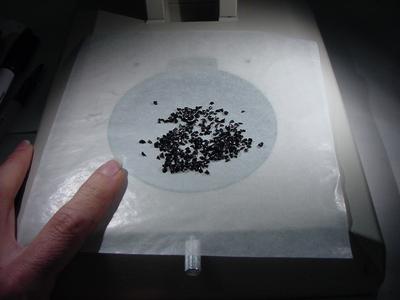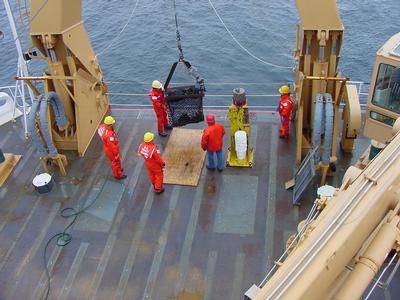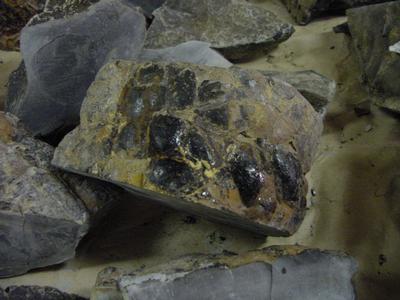26 August, 2001
August 26, 2001
Keeping At It
Today marks 1 month since I left the heat and greenery behind in
Martinsburg, WV. That day seems like yesterday, but instead one half of our
expedition is nearly complete.
I have enjoyed working with and learning from the people here. One aspect
of the work that I am still struggling to learn more about is the chemistry
of the rocks. Today I took some time to try to develop a better
understanding.
I have spent many hours "processing" glass (obsidian) for chemical analysis.
This job involves taking small chunks of this beautiful volcanic rock and
breaking them with a hammer. These pieces are then shaken through 2 sieves
in order to separate them into fine, medium, and coarse sized pieces. The
coarse pieces are still too large, so they are put through the process of
hammering and sieving again until they are all fine or medium in size.
These small pieces are then cleaned in an instrument called an ultrasonic
where they are vibrated clean in warm water. This process takes much time,
but is necessary to get an accurate chemical analysis of the rock.
The machines used for the chemical analysis look very complicated to me.
The main instrument is called a DCP. You can't just put a little rock chunk
into the DCP though- you must first get the glass to a melted state and
place it in acid. This forms a solution that can then be used. In the DCP,
the solution is sucked up through thin tubing and injected into argon gas
that is at a temperature of 5,000 degrees F! These high temperatures cause
light to be emitted, and the spectrum of light given off reveals the
chemical content. The analysis for certain elements such as titanium,
magnesium, barium, and silicon can be done in the DCP. Each element must be
analyzed separately, so it is quite a task to analyze the chemistry of a
rock. The findings that are collected, however, are extremely important.
They lead the scientists to conclusions about the rock that include the
height of the volcano that is came from, the composition of the magma that
solidified to form the rock, and how quickly it has melted. In other words,
it gives us a window through which to see the Earth's interior! Quite
fascinating.
Not all of the rocks that come up in a dredge are put through this
process-only samples of basalts with glass on them are selected. The
samples without glass will have to wait to be analyzed on shore. Since
yesterday's journal, we have completed 3 more dredges and 2 were glassy
basalts. You can guess that this means there is much work to be done, so
it's time to get at it!

This is the volcanic glass that has been processed. Now I will look at it under a scope and pick out only the best specimens for chemical analysis. <>

Another dredge hits the deck. I am on the far right hiding from the Arctic wind. <>

This is a basalt rock that came up in the dredge. The shinny black glass on top is what gets processed and chemically analyzed.
Contact the TEA in the field at
.
If you cannot connect through your browser, copy the
TEA's e-mail address in the "To:" line of
your favorite e-mail package.
|
